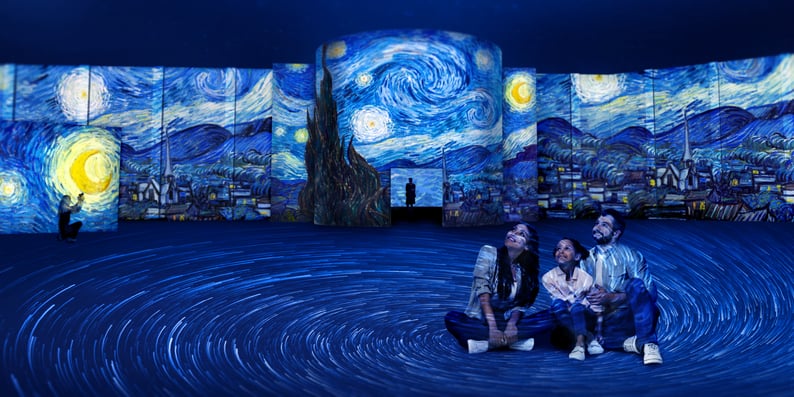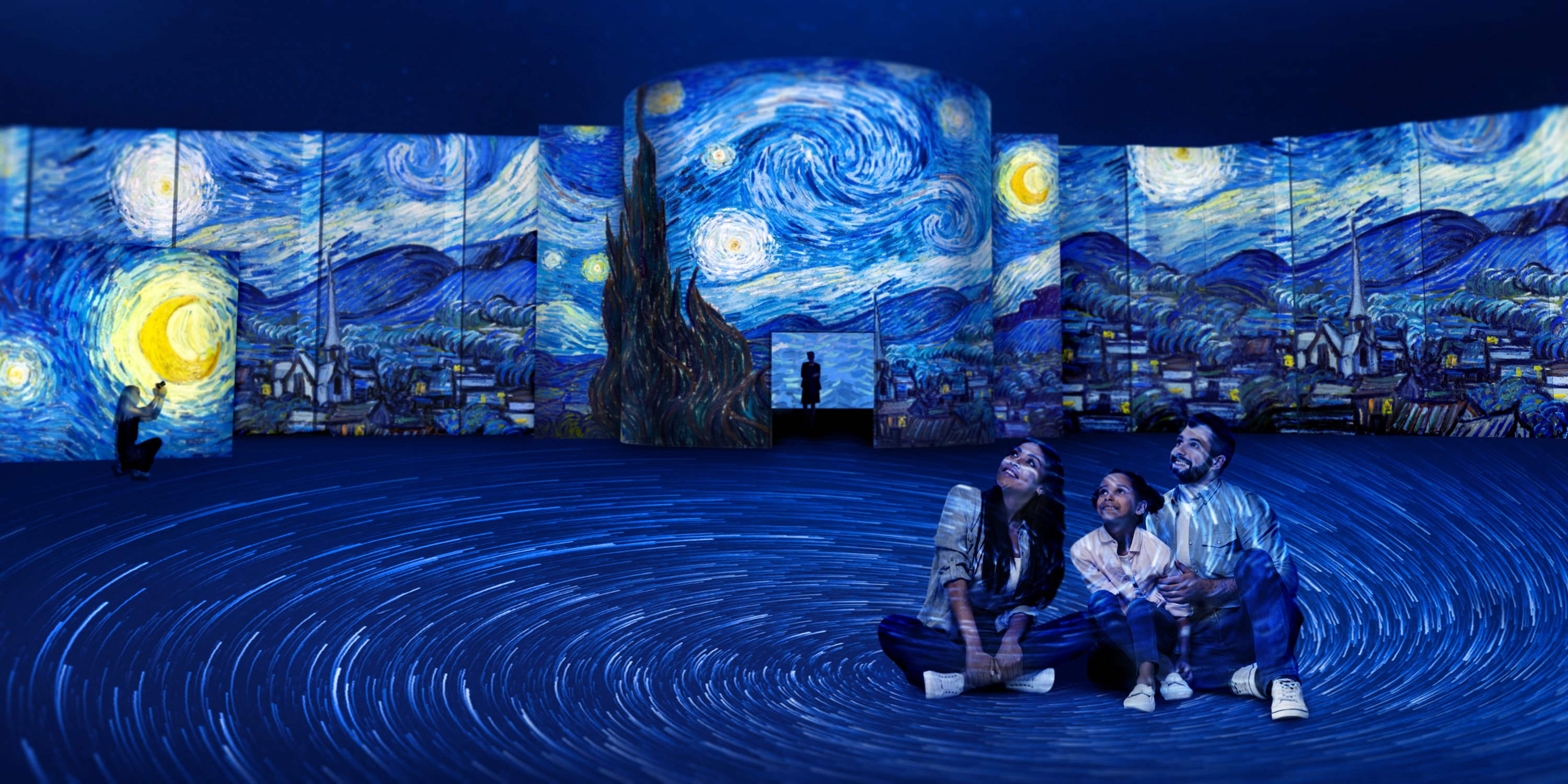How Synthetic Media Helps Museums Create More Engaging Content

Apart from tourism, it is hard to find an industry that has suffered more from the pandemic than museums.
According to the Network of European Museum Organization (NEMO), 75% of museums reported income losses between 1,000 to 30,000 Euro per week in 2020.
There is no doubt that these figures are probably similar for countries in North America. As a result of these income losses, the most common change initiated is discontinuing programs and projects (55%), followed by reducing visitor capacity (49%), and finally, reallocating staff (42%).
But those are not the most alarming numbers. Over 90% of museums responding to the NEMO survey reported a drop in visitation ranging from 10% to over 75% even after reopening.
What does this mean? Even if we take into account the continued long-term softening of quarantine restrictions, museum visitation has almost certainly lost the interest of the public.
In this case, retaining returning visitors should become a long-term strategy for museums. One possible tool that can help is synthetic media. In this article, we'll take a closer look at this new trend, the technologies behind it, and their applications.
The current state of museum exhibitions
Typically, museums can be divided into the following categories according to their specialization:
- general
- natural history and natural science
- science and technology
- history
- art
Museums often host both permanent and temporary exhibitions and unite them by theme, time, or author. Except for exhibitions of rare artifacts, almost all of them lend themselves to digitalization. And this is not about creating a website with a 3D photographic model of space but designing a completely different digital experience.
Well-known exhibition halls use virtual or augmented reality technologies to revolutionize museums and expand the experience and accessibility of exhibitions for their visitors. Let's briefly go through a couple of examples.
Cairo's Egyptian Museum uses mixed reality techniques, including HoloLens holograms, to create a life-like visual representation of ancient war chariots and ancient Egyptian soldiers.
Visitors to the exposition can observe the chariots recreated with great accuracy and life-size soldiers right in the center of the museum's space. Holograms of King Tutankhamun and his consort Queen Ankhesenamun conduct a museum tour instead of a traditional guide.
The rulers of ancient Egypt explain how they used to live and demonstrate how they would use some of the thousands of tools on display.
The same kind of technology has been used in a couple of other prominent projects, including:
- The National Holocaust Centre and Museum in the Witnessing the Kindertransport exhibition
- Intrepid, Air & Sea Museum in its Defying Gravity: Women in Space installation
- National Geographic Museum with the Becoming Jane chimpanzee story
Most of the technologies using synthetic media were used in museums even before the pandemic. But due to the size and scope of the pandemic, it became clear that museum experiences needed to adapt to the digital space to survive. AI generated content played a crucial role in this adaptation, offering innovative solutions to enhance virtual museum experiences and engage audiences remotely.
Holograms, augmented and virtual reality
Following in the footsteps of the media market, digital holograms were the first technology to be widely used by museums.
Imagine being able to present an Egyptian pharaoh or young French emperor before the very eyes of every museum visitor in all their glory. These holograms met the requirements of museums and provided a sufficient level of immersion and innovation.
With the advent of the pandemic, everything changed. Without visitors physically attending a museum’s space, the technology tied to a specific location is rendered useless. However, AI content generation has emerged as a solution, enabling museums to create engaging digital experiences that transcend physical constraints and reach audiences worldwide.
It became clear that museums needed to develop methods for delivering a completely remote experience for visitors. This meant that management teams would have to come up with ways to recreate both the museum space and its historical figures using interactive 3D elements. And most importantly, identify the types of technology required to complete the task.
VR goggles, now widely available, deliver the ultimate immersive experience in a virtual museum. If a museum isn’t interested in developing a space to utilize this technology, they can create online 3D spaces and make them accessible on their website. In both cases, each method expands a museum’s reach to a wider audience.
In earlier posts, we’ve covered the technical aspect of creating virtual characters in detail — VTubers and holograms. If you’re not familiar with these types of technology, take a moment to browse these posts so that you are more familiar with the tasks you need to tackle before creating unique characters for a museum.
In short, you need to create and dub 3D characters. For a museum, these can be both historical or fictional characters of a particular cultural and historical period.
In the end, it doesn't really matter what you settle on. Building a mixed reality experience using tools like Microsoft HoloLens or making your museum accessible as a remote 3D experience demands that your characters be memorable.
How synthetic media voice cloning helps museums appeal to younger audiences
The vast majority of today's youth consume digital content. Many of them are very young people, but in 10-15 years they will make up the majority of the mainstream audience.
Modern museums are grappling with a difficult task: how, while maintaining the unique spirit of the museum space, can we attract an audience that is used to experiencing art and history in an untraditional way?
To understand what today’s technology is capable of, take a look at this Respeecher project that involved collaborating with the MIT Center for Advanced Virtuality. This project showcased the potential of voice cloning for museums, where AI-generated voices can bring historical figures to life and enhance the immersive experience for visitors.
In the "In Event of Moon Disaster," we re-created Nixon's hypothetical speech in the potentially unfortunate event of the Apollo 11 mission ending in disaster. On another occasion, we helped recreate a digital Vince Lombardi, the famous Green Bay Packers coach, for the 2020 Super Bowl finals.
Just imagine that you are able to accurately recreate almost any historical figure as if they lived not so long ago.
For a younger audience, the opportunity to witness a modern and lifelike Babe Ruth, Patton, or John F. Kennedy on their monitors or via a museum's augmented reality technology would be an unforgettable experience.
Voice cloning for museums opens up endless possibilities for bringing historical figures to life in engaging and immersive ways.
With the help of Respeecher’s advanced voice maker technology, holographic history now has a unique voice. Using Respeecher's voice cloning technology, we can recreate any voice of a historical figure and synthesize unlimited audio content based using that vocal recreation.
The only condition is an hour's worth of the original voice for the intended person. Discover more about the voice cloning process by reading our voice synthesis FAQ and downloading this whitepaper on increasing audio resolution with Respeecher to learn how audio super resolution works and how you can benefit from it.
Here are just a few of the most common use cases for synthesized voice in museums:
- A behind-the-scenes narration on behalf of a historical figure. These characters are able to comment on the events of an era firsthand. AI voice generator tools can precisely replicate the voices of historical figures, enhancing the authenticity of the narrative experience in museums.
- Creating unique voices for digital museum characters.
- Dubbing in dozens of languages (in the historical figure’s original voice as if they are a native speaker), which exponentially expands the potential audience for a digital museum.
AI generated content, particularly AI voice generation, plays a key role in bringing these experiences to life with authenticity and accessibility.
To understand how our voice cloning technology works - drop us a line and we will walk you through the entire process. Respeecher is the only speech synthesis software that works with Hollywood Studios, leading game developers, and educational organizations. Our advanced AI voice generator technology ensures high-quality voice synthesis for a wide range of applications.
FAQ
Synthetic media for museums enhances visitor experiences with AI-generated historical characters, virtual reality, and holograms, providing immersive, engaging exhibits and overcoming physical limitations.
AI voice cloning in museums brings historical figures to life, enhancing storytelling and authenticity in exhibits, providing unique voices for digital characters, and enabling multi-language support.
Holograms in museum exhibitions create lifelike, interactive experiences, allowing visitors to engage with historical characters or objects in 3D, enhancing immersion and bringing history to life in innovative ways.
Augmented reality in museums enriches the visitor experience by overlaying digital elements onto the physical space, creating immersive and educational interactions with exhibits.
To appeal to younger audiences, museums can leverage AI voice cloning, virtual reality, and augmented reality to create innovative museum experiences that align with digital content consumption habits.
Ethical AI applications in museums must prioritize respect for cultural heritage, accuracy in representation, and data privacy while ensuring AI-generated content is transparent and authentic.
The pandemic accelerated digital transformation for museums, driving the adoption of AI-powered museum guides, virtual reality, and synthetic media to engage remote visitors and ensure accessibility.
Best practices include using AI-generated content for historical accuracy, incorporating voice cloning technology for lifelike narratives, and leveraging AI-enhanced visitor experiences to increase engagement and accessibility.
Glossary
AI voice cloning technology
A tool that replicates human voices using synthetic media to create lifelike audio, enhancing museum exhibits, historical character narratives, and visitor engagement.
Synthetic media for cultural heritage
Digital tools like AI voice cloning, holograms, and virtual reality enhance museum exhibits, cultural preservation, and visitor engagement.
Augmented reality in museums
AR enhances museum exhibits by overlaying digital elements like AI-generated historical characters and holograms, offering an AI-powered visitor experience.
Digital museums for younger audiences
Leveraging synthetic media like AI voice cloning, augmented reality, and virtual reality, digital museums create innovative experiences for younger visitors.
Holograms in museum exhibitions
Holograms bring AI-generated historical characters to life, enhancing museum visitor engagement and transforming exhibits with synthetic media and digital tools.
AI-powered museum experiences
AI enhances visitor engagement with AI-generated historical characters, voice cloning, and augmented reality, driving digital transformation in museums.

- synthetic media
- machine learning
- holograms
- hologram technology
- virtual reality
- augmented reality
- artificial intelligence (AI)
- holograms in real life
- digital humans
- deepfake technology
- ethical deepfakes
- speech synthesis
- mixed reality techniques
- museum exhibitions
- digital experience
- AI voice generator
- AI content generation
- AI generated voice
- Respeecher for Business
- voice maker
- voice cloning for museums





